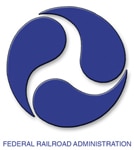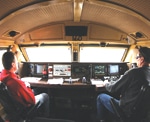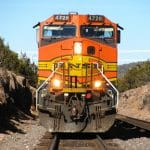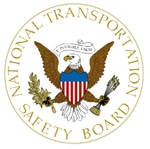 NEW ORLEANS – Federal Railroad Acting Administrator Sarah Feinberg and New Orleans Deputy Mayor and Chief Administrative Officer Andy Kopplin hosted the eighth of 11 nationwide regional forums on the Beyond Traffic draft framework at the New Orleans Regional Transit Authority Building. The Beyond Traffic report examines the trends and choices facing America’s transportation infrastructure over the next three decades, including a rapidly growing population, increasing freight volume, demographic shifts in rural and urban areas, and a transportation system facing more frequent extreme weather events. The report predicts increased gridlock nationwide unless changes are made in the near-term.
NEW ORLEANS – Federal Railroad Acting Administrator Sarah Feinberg and New Orleans Deputy Mayor and Chief Administrative Officer Andy Kopplin hosted the eighth of 11 nationwide regional forums on the Beyond Traffic draft framework at the New Orleans Regional Transit Authority Building. The Beyond Traffic report examines the trends and choices facing America’s transportation infrastructure over the next three decades, including a rapidly growing population, increasing freight volume, demographic shifts in rural and urban areas, and a transportation system facing more frequent extreme weather events. The report predicts increased gridlock nationwide unless changes are made in the near-term.
The town-hall style meeting allowed citizens, elected officials, metropolitan planners, transportation industry partners, business owners, and community leaders to learn more about the framework and ask questions about the trends identified in it. Acting Administrator Feinberg and Deputy Mayor Kopplin also solicited input from the participants on their region-specific experiences and asked for ideas on how to solve those challenges.
“Beyond Traffic recognizes that New Orleans and the rest of the Gulf Coast megaregion will be uniquely impacted by critical transportation challenges and immense population growth over the next 30 years,” said Acting Administrator Feinberg. “As we finalize the framework, we wanted to hear directly from the residents who know their transportation systems the best. The insightful and productive discussion we had this morning is one that all Americans should be having about our country’s transportation needs.”
By 2050, the population of the Gulf Coast megaregion – which includes Baton Rouge, Birmingham, Jackson, Mobile and New Orleans – is expected to increase by more than 76 percent. But, as the condition of transportation infrastructure continues to worsen, leaders within the region have critical investment decisions to make in order to accommodate this growth in population while preserving quality of life.
“As New Orleans continues to experience unprecedented population growth, smart transportation will remain a key priority,” said New Orleans Deputy Mayor and Chief Administrative Officer Andy Kopplin. “We look forward to continuing our partnership with the federal government and our local and regional stake holders.”
Following remarks by the Deputy Mayor and Acting Administrator and a presentation from the U.S. Department of Transportation’s Beyond Traffic team, Deputy Mayor Kopplin, Baton Rouge Mayor Kip Holden, Natchez MS Mayor Larry L. “Butch” Brown, and Louisiana Department of Transportation & Development Secretary Sherri H. LeBas participated in a panel focusing on the impact of Beyond Traffic trends in the region. The last half of the program engaged attendees in a facilitated conversation, giving them the opportunity to share feedback that will inform the final Beyond Traffic report when it is published in 2016.
To learn more about Beyond Traffic or to read the full framework, click here.

 CLEVELAND – Buried under the rust, the decades of peeling paint jobs, the thousands of miles, the dirt and the gunk is a golden era.
CLEVELAND – Buried under the rust, the decades of peeling paint jobs, the thousands of miles, the dirt and the gunk is a golden era.  JACKSONVILLE, Fla. – As CSX works to match its resources to a changing business environment, the company today announced the reduction of train operations at Erwin, Tennessee.
JACKSONVILLE, Fla. – As CSX works to match its resources to a changing business environment, the company today announced the reduction of train operations at Erwin, Tennessee. The maintenance workers of First Student Inc. of Bus Local 1908 in Rochester, N.Y. have ratified a four-year agreement. The agreement was approved with 17 members voting for the agreement and one against, for a total of 18 votes.
The maintenance workers of First Student Inc. of Bus Local 1908 in Rochester, N.Y. have ratified a four-year agreement. The agreement was approved with 17 members voting for the agreement and one against, for a total of 18 votes.  A Blue Ribbon Panel, which was chosen last year by
A Blue Ribbon Panel, which was chosen last year by  A noisy yellow machine laying down railroad track near Alva, Oklahoma — as much as a mile a day of concrete and steel — is Warren Buffett’s solution to the industry’s dwindling coal traffic.
A noisy yellow machine laying down railroad track near Alva, Oklahoma — as much as a mile a day of concrete and steel — is Warren Buffett’s solution to the industry’s dwindling coal traffic. The White House has pulled the plug on former MBTA chief Beverly Scott’s nomination to serve on a national transportation board.
The White House has pulled the plug on former MBTA chief Beverly Scott’s nomination to serve on a national transportation board.